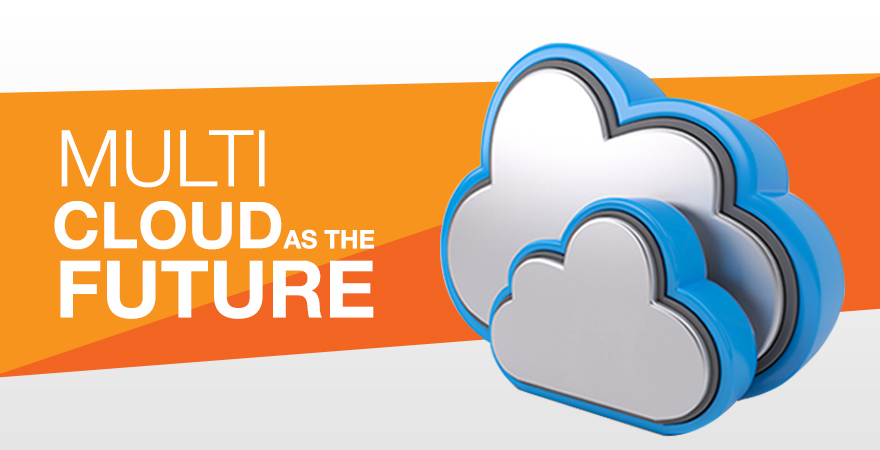With rapid advancements in technology in particular and cloud based solutions in general, today’s corporate environment is evolving at a rapid pace. The deployment of an appropriate IT infrastructure has become a critical component of organizational efficiency and sustainability.

Previously, decisions surrounding the selection of IT Infrastructure were taken at a much localized level. This is not the case anymore. Now, due to the critical nature of this organizational facet, the decisions surrounding IT deployment have been elevated to the middle or even top level management.
Also Read:
- 8 Reasons: Why Cloud Computing For Small Business?
- List of 7 Best Desktop as a Service DaaS Providers 2020
- Microsoft Ignite 2020 | What is Microsoft Ignite Conference?
- AWS vs. Azure vs. Google Cloud
Data Growth
Now, data is growing at an exponential pace. Every process, no matter how trivial, is being managed on the basis of insights received through data analysis. This trend is resulting in the generation of data at unprecedented proportions. Storing, managing and analyzing vast amounts of data is a challenge in itself.
IoT and Data
We have set foot in the realm of IoT in which virtually every device is generating, propagating and then receiving huge amounts of data constantly. The whole idea behind IoT revolves around data and the ability of processing this data to extract actionable insights at the most localized level.

In this post, we will try to highlight some of the defining trends in the tech industry for this year. The ability of entities to manage their data effectively is rapidly becoming a critical success factor.
Migration to Cloud
It is estimated that by the year 2022, nearly 80% of enterprise databases will migrate to the cloud. This figure closely trails the even better percentage of enterprise workloads that will be moved over the cloud for obvious agility and efficiency considerations.
As the needs for enterprise database management grow ever more dispersed and volatile, so does the need for having flexible solutions. The answer comes in the form of cloud based management of enterprise databases. Firstly, this minimizes or eliminates the need for maintaining on premise hardware.
Related:
- ROI and Migration in the Cloud: dinCloud Provides it All
- 5 Considerations for Pharmaceutical Companies Migrating to the Cloud
- Cloud or Bust: 4 Keys To Migrating
A Cloud Based Infrastructure not only brings cost related benefits, it also transforms the database management capability of the organization into a highly flexible affair. In light of the offered flexibility, we should see a continued migration of enterprise databases and workloads over the cloud infrastructure.
Hybrid Configurations as a Stop Gap
The migration of enterprise data or workloads over the cloud is a daunting task. In addition to the traditional complexities of any major structural change, there is the mammoth challenge of ensuring complete business continuity. In today’s cut throat environment, being offline is just not an option.
In view of the above challenges, most organizations prospecting for a cloud based solution will opt in favor of a hybrid deployment as an interim measure. In this arrangement, we will see the migration of non business critical data or workloads transitioning to the cloud in the first phase.
Related:
Once those processes have stabilized, we may see the transition of business critical workloads over the cloud based infrastructure. While most such entities will fully migrate to the cloud in the mid term, certain entities may still prefer to retain business critical data and workloads on premise.
Multi Cloud as the Future
In the early days, most Cloud Service Providers (CSP) remained well entrenched in their area of competitive edge. This is changing really fast as the cloud tenant market is pushing a shift towards multi cloud environments. In this new cloud paradigm, gone are the days when you were locked into a single cloud provider.

Hybrid cloud environments will be characterized by storage coming from one CSP, while database management being sourced from a different CSP altogether. However, such infrastructures will deliver results only if the underlying mesh of cloud integration solutions is robust, yet flexible.
We should expect landmark progress on the front of multi cloud integration solutions. To cope with this emerging trend, even CSPs will have to step out of their respective comfort zones and play their part in making multi cloud infrastructures a common deployment model.
Data Security and Privacy
The two factors likely to occupy center stage in the current year will most likely be data security and privacy. As more and more data migrates to the cloud, the underlying organizations lose control over its storage and management. This raises the stakes for data security to exponential levels.
Related:
- Security Benefits of Cloud Computing Solutions
- 12 Security Questions to Ask From Your Cloud Solution Provider
Cloud Service Providers (CSP) with terabytes of sensitive and business critical data belonging to multiple cloud tenants will act as giant magnets for perpetrators of cyber attacks. Even the slightest lapse on the part of CSPs can expose sensitive and business critical data to malicious actors.
As more workloads migrate to the cloud, a data breach is no more an option. An organization’s control over privacy also gets diluted upon transitioning to the cloud. However, there is a major global shift in how data privacy will be handled by regulators across the globe.
Many major jurisdictions are moving towards strong regulations around data privacy. The new regimes are limiting the scope for how personal or sensitive data will be collected, stored, managed and processed. A strong legislation is being accompanied by the imposition of heavy fines around data breach and privacy violations.
Over this year, we should continue to see legislation around data security and privacy grow more teeth. To cope with jurisdictional challenges, we may also see strong geographical limitations being imposed on data storage and movement. As a result, we should see data center footprint of CSPs get more decentralized.
Artificial Intelligence (AI) and Machine Learning (ML)
Both ML and AI are highly complementary disciplines. For ML to be truly effective and result oriented, the underlying infrastructure must be capable of handling computations over vast amounts of data. The requisite processing muscle is more likely to be residing with CSPs rather than individual organizations with limited computing power.
We should see more reliance on cloud infrastructures when it comes to handling ML workloads. Larger the underlying data set, the more reliable and actionable will be the derived insights we call ML. These valuable insights will in turn act as actionable guidelines in real life scenarios.
Artificial Intelligence (AI) is a highly underutilized domain but we should see an increase in the application of AI to real life corporate scenarios. The incorporation of AI, backed by strong ML insights will greatly optimize the pace and quality of organizational decision making, thus improving agility and responsiveness.
Data Monetization
As more organizations discover the potential for data, they are exploring new avenues for monetizing it with the aim of generating new revenue streams. However, given the rapidly evolving data security and privacy landscape, such a data manipulation will be akin to walking a tight rope.
Organizations that plan to monetize data will have to strike a balance between revenue and compliance. If an entity gets too carried away with revenue at the cost of privacy, it will have negative consequences for its long term sustainability and compliance with regulations.
Even in this year, we should see a further marginalization in the scope for manipulating sensitive or personal data for monetary gains. Entities that are entrusted with sensitive data will have to adhere strongly with local regulations in particular and international statutes in general.
Conclusion
This will be yet another eventful year for the cloud computing industry. We should see more databases and workloads move to the cloud. Data security and privacy are likely to occupy center stage when it comes to regulatory compliance.


